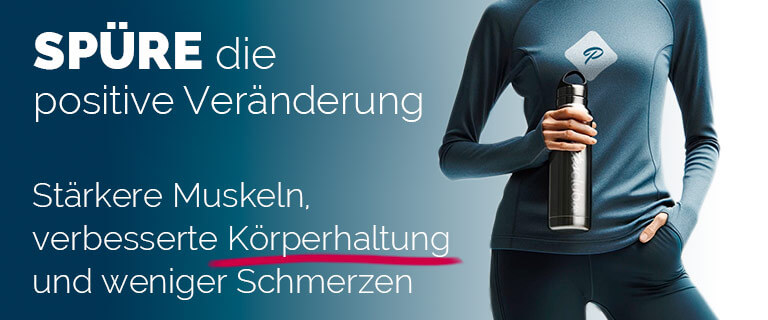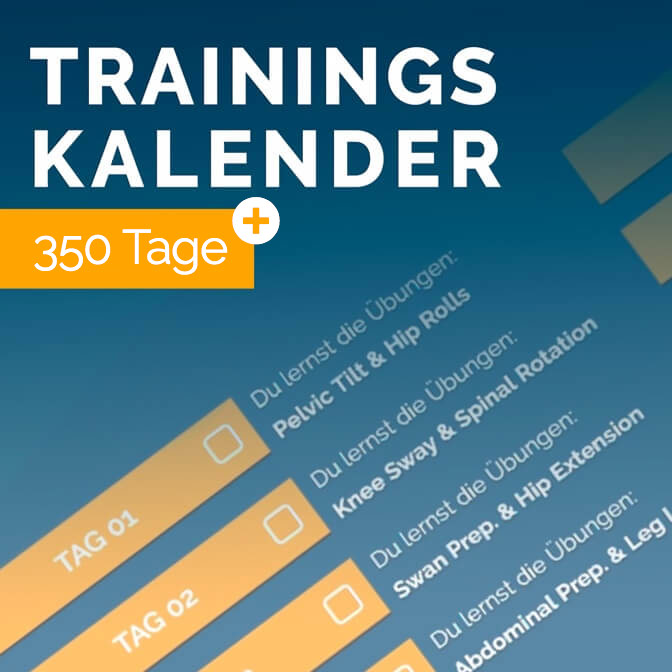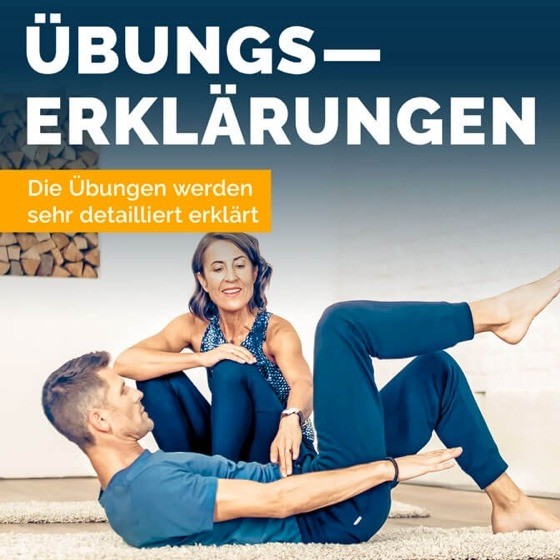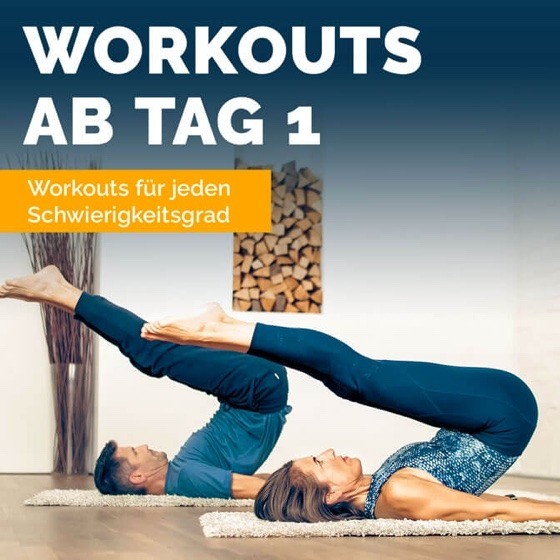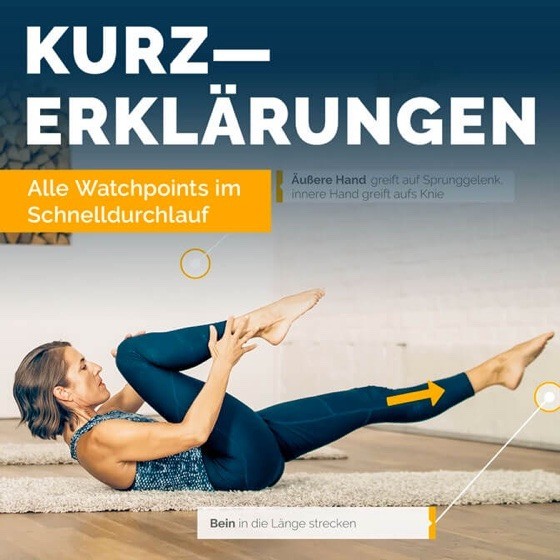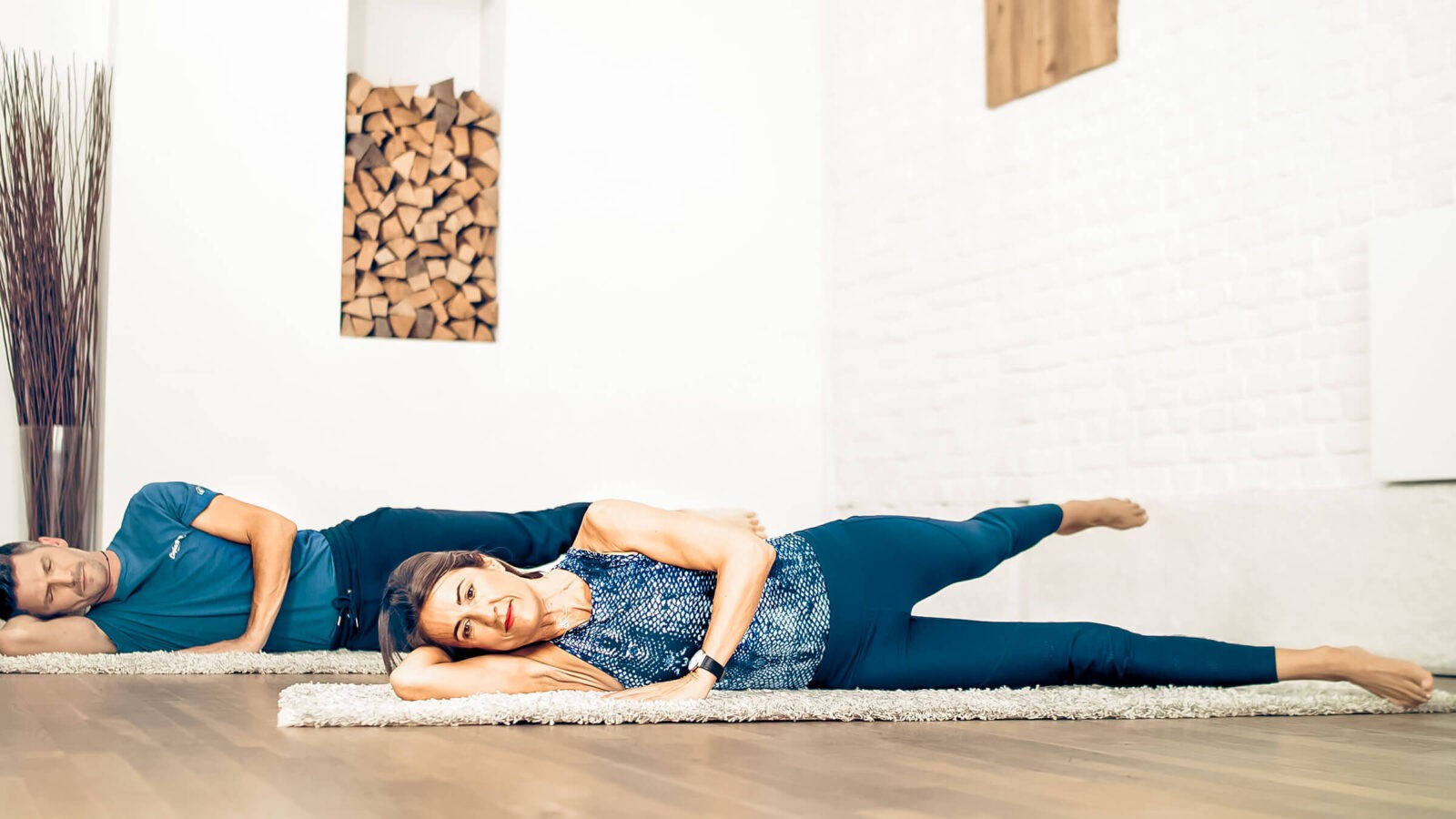
Pilates exercises explained
Side Kick
The Pilates exercise "Side Kick" activates the deep and lateral trunk muscles. At the same time, it leads into a dynamic stretch of the hip flexor as well as the posterior leg chain. The hip joint is mobilized and coordination is promoted by changing the foot position.
This exercise prepares us for all leg exercises in the lateral position.
Exercise description
We lie in the extended, neutral side position and pull the legs slightly in front of the body. The upper hand rests in front of the sternum, the head rests on the lower arm or a pillow in the extension of the spine. The pelvis is positioned vertically so that the spine can align itself well. Thus we form an imaginary muscle corset.
With the inhalation we swing the upper leg forward as far as we are able to keep the upper body still. Bounce there - the foot is in flex position.
With the exhalation we swing the leg against an imaginary resistance behind the body axis until we feel a stretch in the hip flexor. However, we must not fall into the hollow back. Foot position is point, upper body is still.
We repeat the exercises 5 to 8 times on one side, then switch to the other side.
Frequently asked questions
How far may I move the leg back and forth?
This is based on your mobility in the hip joint, stretchability of the front and back of the leg, and your body stability.

Pro Tip From Maria
Keep extending your leg out of the hip joint. This way you activate the deep, stabilizing hip muscles even more.
If you can imagine your body remaining as still as a Buckingham Palace soldier's while the leg moves back and forth like a stiff pendulum, you may gain more control over your torso.
Always make sure that your spine does not sag like a hammock. This will cause you to lose the muscle corset.
Video with the brief explanation of the Pilates exercise Side Kick
Most common errors
Leg sinks towards the floor during the movement.
The length of the leg from the hip joint is lost.
Spine sinks toward the floor.
The head is not in the extension of the spine.
Assistance
What can you do if the exercise is too difficult?
Keep movement smaller.


